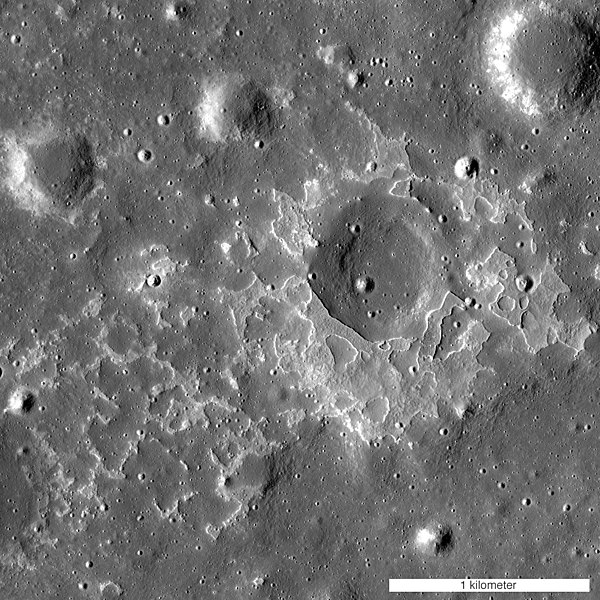Mare Orientale is a lunar mare. It is located on the western border of the near side and far side of the Moon, and is difficult to see from an Earthbound perspective. Images from spacecraft have revealed it to be one of the most striking large scale lunar features, resembling a target ring bullseye.
2010 photomosaic by Lunar Reconnaissance Orbiter
Dome-shaped hills at the southern edge of Mare Orientale Basin, possibly formed by lava flows.
Apollo 17 photographed eastern Mare Orientale in the faint light of earthshine.
Albedo mosaic of Clementine images
The lunar maria are large, dark, basaltic plains on Earth's Moon, formed by lava flowing into ancient impact basins. They were dubbed maria by early astronomers who mistook them for actual seas. They are less reflective than the "highlands" as a result of their iron-rich composition, and hence appear dark to the naked eye. The maria cover about 16% of the lunar surface, mostly on the side visible from Earth. The few maria on the far side are much smaller, residing mostly in very large craters. The traditional nomenclature for the Moon also includes one oceanus (ocean), as well as features with the names lacus ('lake'), palus ('marsh'), and sinus ('bay'). The last three are smaller than maria, but have the same nature and characteristics.
Ancient rift valleys – rectangular structure (visible – topography – GRAIL gravity gradients) (1 October 2014)
Ancient rift valleys – context.
Ancient rift valleys – closeup (artist's concept).
Irregular mare patch – evidence of young lunar volcanism (12 October 2014)








